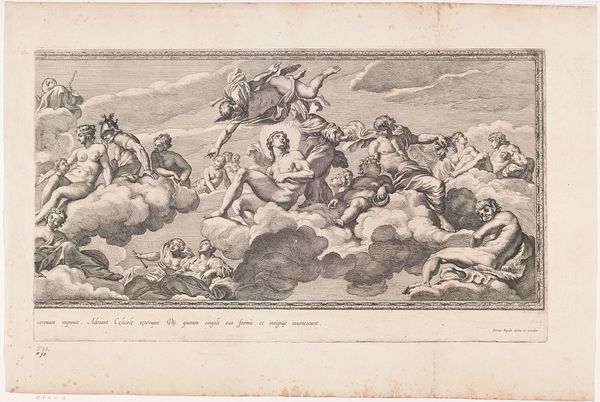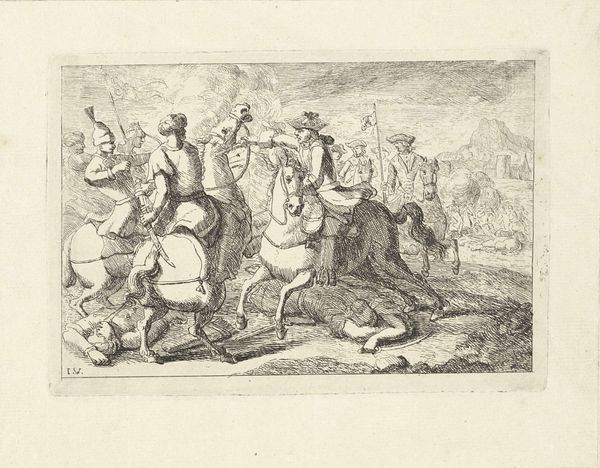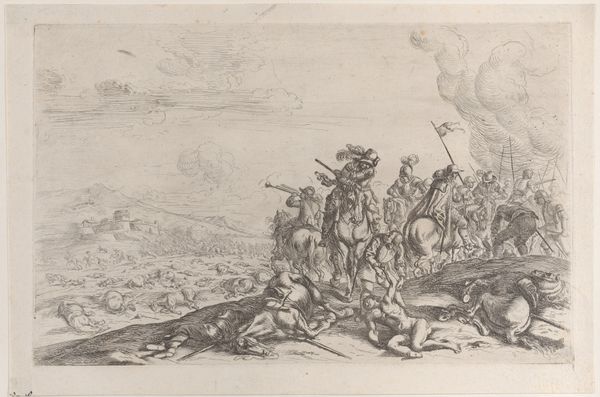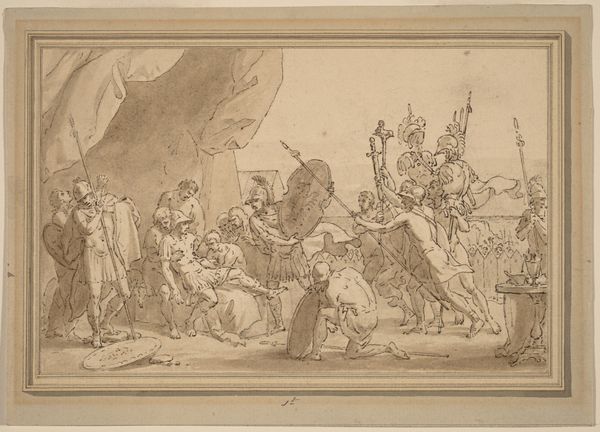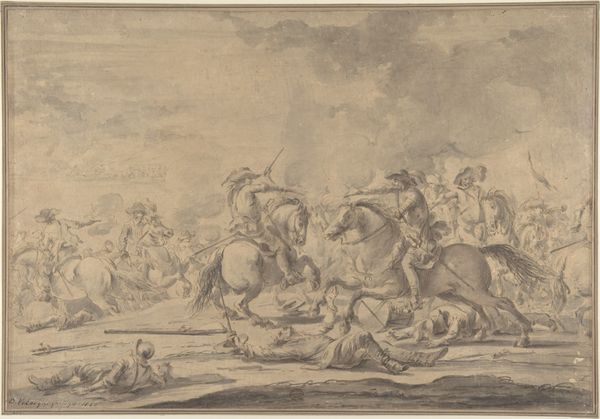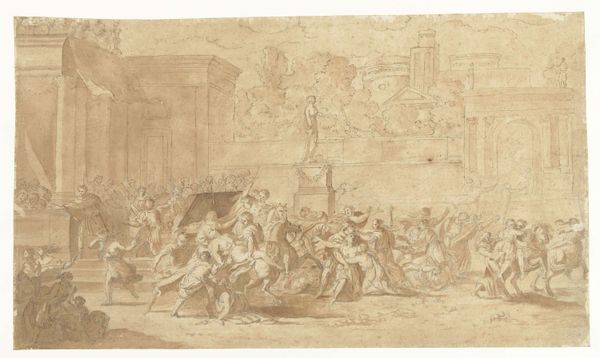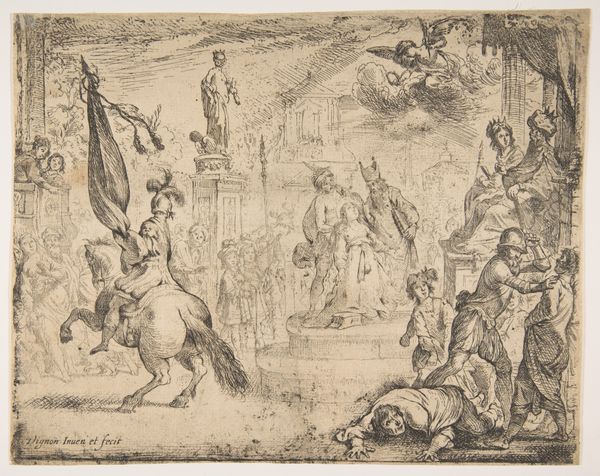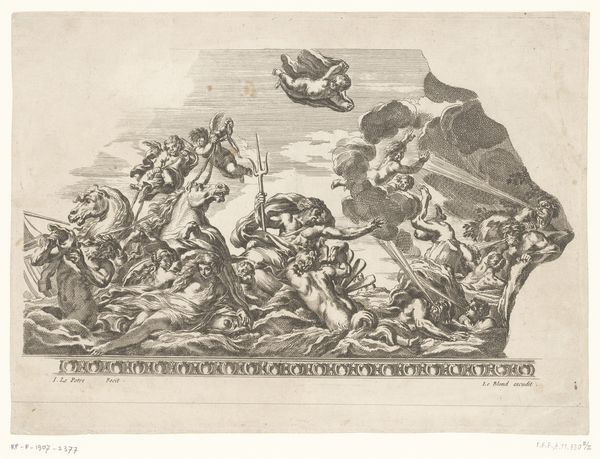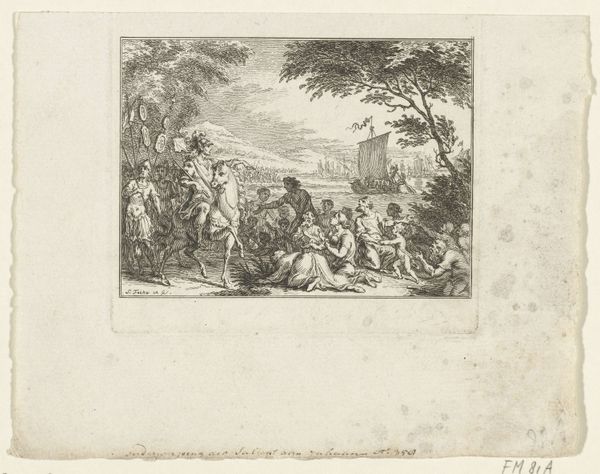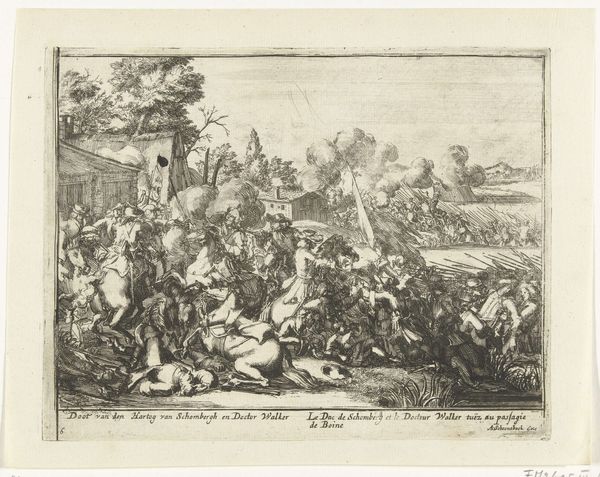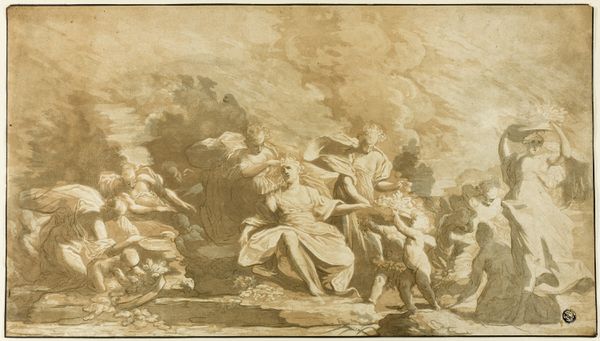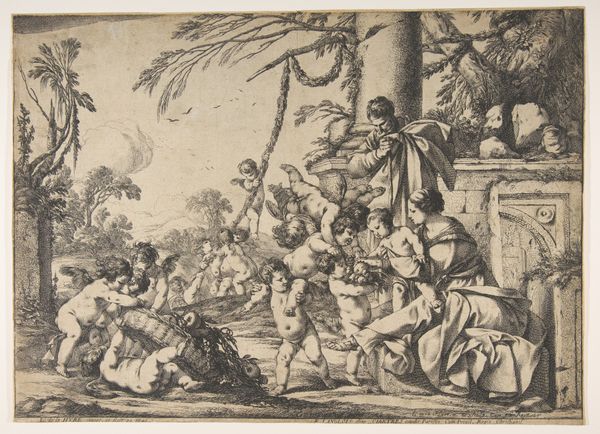
drawing, ink
#
drawing
#
baroque
#
landscape
#
classical-realism
#
figuration
#
ink
#
history-painting
Dimensions: 9-7/16 x 16-3/4 in (24 x 42.5 cm)
Copyright: Public Domain
Curator: Here we have a delicate ink drawing titled "Drawing for a Harpsichord Top." Although the artist remains anonymous, we can date this piece from around 1700 to 1800. Editor: It strikes me immediately as ethereal, almost a dreamscape. The monochromatic wash emphasizes a sense of floating, a scene caught between worlds. Curator: Indeed. Considering its function, intended for the top of a harpsichord, this piece fits well within the aesthetic and philosophical context of its time. The Baroque era was marked by opulence and theatricality but also the rise of rationalism. Harpsichords, often status symbols, featured ornate decorations, reflecting not just wealth but cultural sophistication. Editor: Absolutely, and if we zoom in, the recurring motifs of mythological figures such as Pegasus and what seems like Apollo, resonate with enduring concepts and meanings. Pegasus, of course, has always been the symbol of imagination. And note the Centaur, this tells us that the artist has borrowed directly from the Greeks. Curator: That's right, these classical allusions aren’t mere decoration; they're potent symbols. They evoke themes of knowledge, aspiration, and artistic inspiration. But it also speaks volumes about accessibility and the socio-economics of cultural trends. It’s reasonable to assume that a wealthy family, deeply entrenched in hegemonic European social hierarchies, is trying to signal that it possesses refinement and elevated moral principles by way of the classics. Editor: It's a visual embodiment of power and knowledge intertwined. That columned building on the horizon, likely alluding to classical temples, speaks to the enduring fascination with an idealized past. These visual tropes act as vessels, constantly pouring inherited values from one epoch into another. Curator: Precisely. The past as a tool, continuously reshaping present sensibilities and validating contemporary world views. We have to consider these implications if we are to avoid a decontextualized analysis, ensuring a more rounded and relevant understanding of our material culture. Editor: Looking closely, that scene conveys to us an almost ancestral narrative; an unfolding saga of shared identity. The symbols in this drawing, the characters depicted, offer an allegorical extension from antiquity to the European enlightenment. They provide more than visual cues: they give us history, and also hint at an evolving cultural psychology. Curator: Indeed. This work allows us a peek into a rich, complex tapestry of art, culture, and society, urging us to question how history continues to resonate and shape contemporary norms. Editor: And for me, that glimpse helps decode how these symbols constantly transmute their messages throughout our evolving times.
Comments
No comments
Be the first to comment and join the conversation on the ultimate creative platform.
